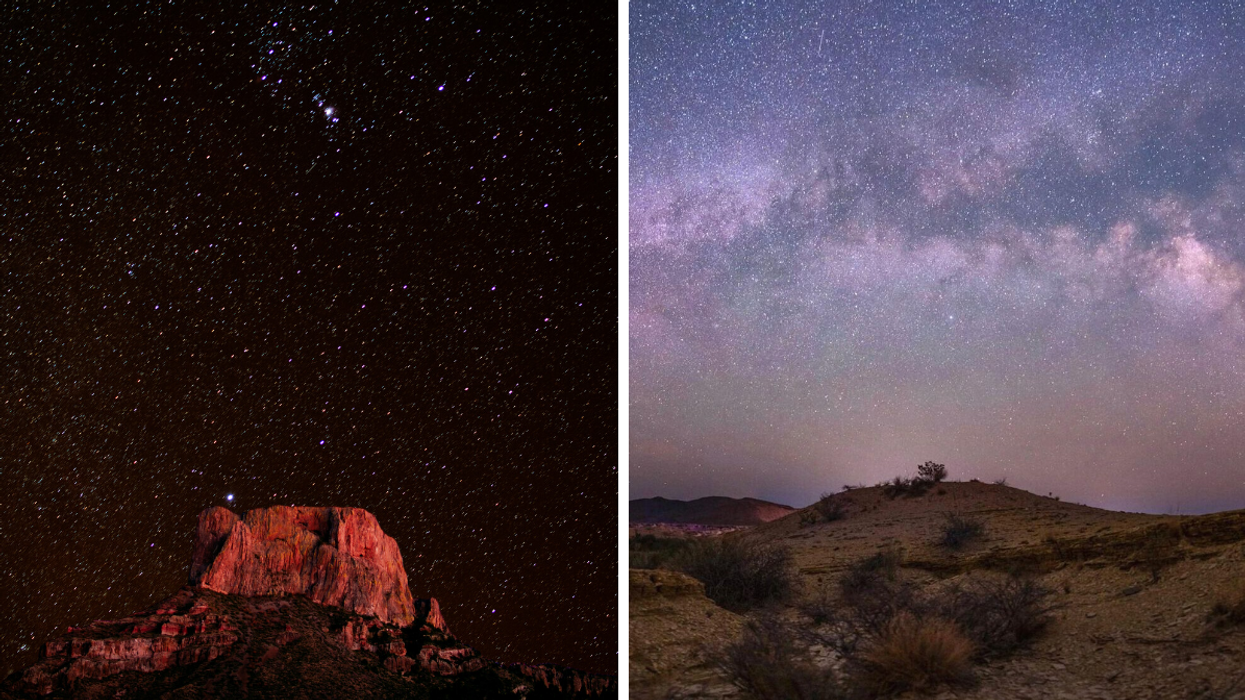Some Areas In Texas Have Forced 'Dark Skies' & Rare Views Of The Milky Way
There are currently 12 pitch-black areas in the Lone Star state!

Stars shine over Casa Grande Peak in Big Bend National Park. Right: The Milky Way glows in Terlingua, TX.
Texas is a land of seemingly infinite natural wonders. Natural parks, man-made rivers and sculpted caverns, to name a few.
One natural marvel that many people don't think of are the designated dark sky locations across the state that remain unscathed by the silver touch of city lights. These dark skies are the ultimate destination for stargazers of all kinds.
The International Dark-Sky Association aims to preserve spots around the world, where people can still look up and watch the sky above them.
No joke, there are currently 12 pitch-black areas in the Lone Star state where you can see the milky way swirl above.
What are Dark Sky preserves?
The IDA designates certain tracts of land around the world where artificial light is prohibited solely to preserve starry night skies where they show up the best.
They created a program that keeps track of the different types of Dark Skies there are based on the location.
For instance, there are five categories: communities, which are cities that have implemented efforts to keep dark skies; parks, either public or private; reserves, featuring a dark "core"; and sanctuaries, which contain the darkest of Dark Skies. The fifth designation is specific to urban areas that have more light pollution.
All categories must meet the given guidelines, which vary, but all require one thing: a starry night sky the public can witness.
So, where exactly in Texas can you see the milky way?
That's everyone's burning question.
Well, four parks, two sanctuaries and six communities around the state vow to keep the skies clear for people to enjoy views of the dazzling stars and shining planets.
The largest Dark Sky reserve in the world is the area that encompasses the University of Texas' McDonald Observatory in west Texas.
The impressive observatory joined forces with IDSA to create a preservable span of land for astronomical research, tourism and wildlife.
"The new Greater Big Bend International Dark Sky Reserve will encompass more than 15,000 square miles in portions of western Texas and northern Mexico," UT News reported back in April.
While it may be the largest, it's not considered the darkest in the state. That title goes to Big Bend Ranch National Park, near the desert ghost town of Terlingua, TX, ranking a measly 1 on the Bortle scale of light pollution.
It's pretty darn dark here, so we can promise you a dazzling, starry sky on any clear night.
